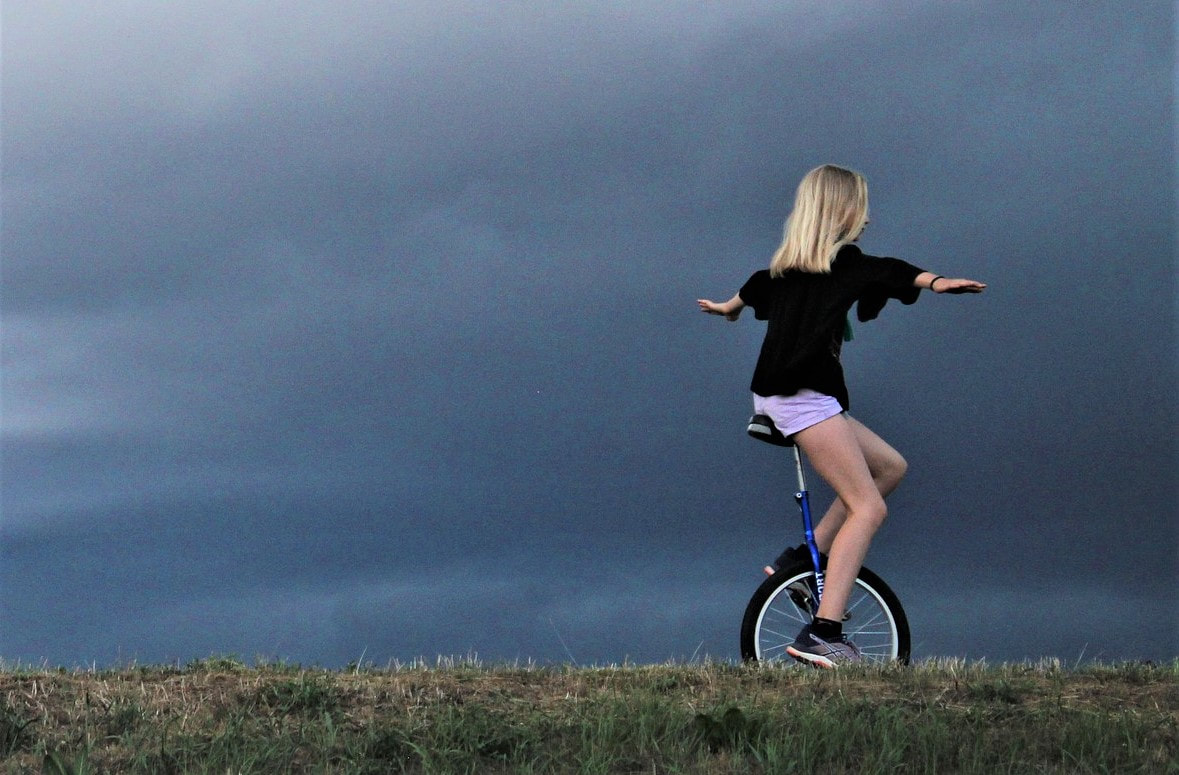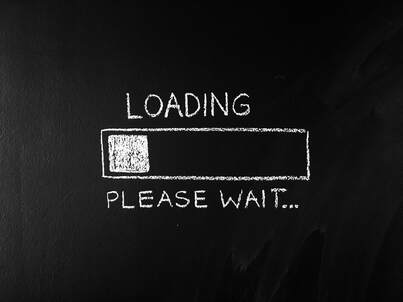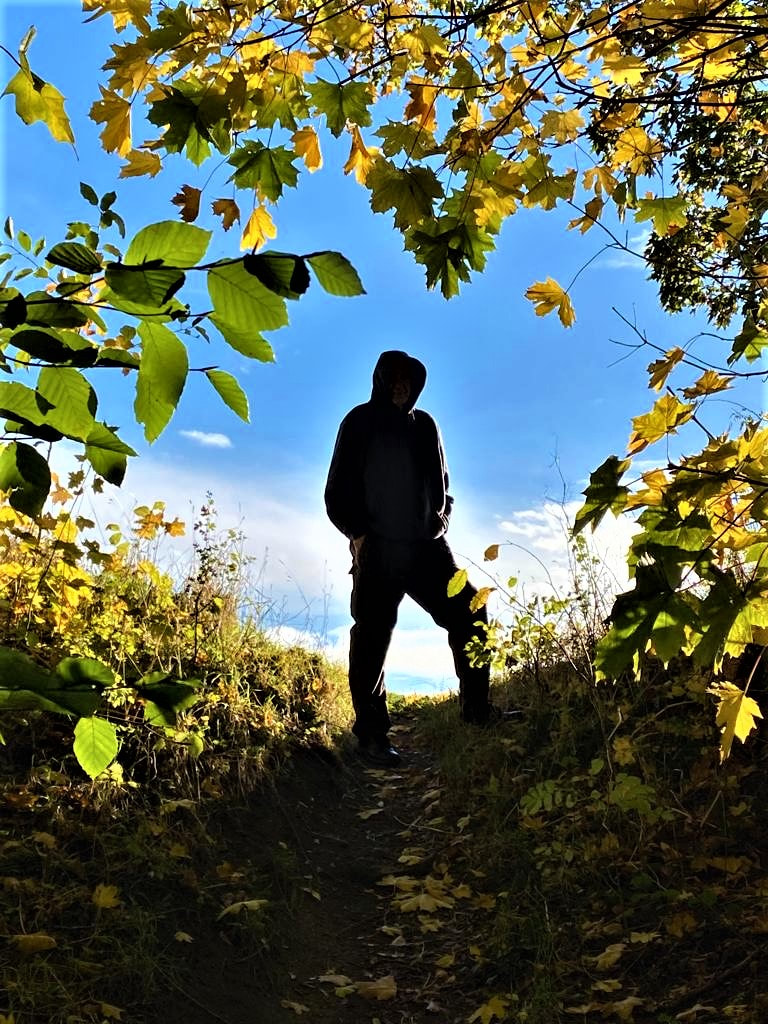|
‘The art of teaching is the art of assisting discovery.’ (Mark Van Doren) This looks and feels so very different to my own school days. It has been fascinating to explore the spirit and approach to working with students at a Montessori school in Germany over the past few weeks. Laura, an English language teacher from Romania, sets out a creative range of different activities in a classroom. The children look around and choose whichever activity appeals most to them. Every activity involves doing something physical, not just thinking. I’m struck by how the teacher chooses to offer only minimal explanation. Each student works at their own level and pace and problem-solves for themselves, or with others, if they get stuck. The teacher is available – if needed. Kathrin, a maths teacher, invites the students to sit in a circle and introduces me, briefly. She invites the students to practise English by asking me questions directly, questions to which the answer must be a number. They ask, ‘How tall are you?’, ‘How much do you weigh?’, ‘What’s your shoe size?’, ‘What did your trainers cost?’ etc. We notice that the measures I use in the UK are different to those they use in Germany. This sparks curiosity and the students work out how to convert the numbers I give them into those that are meaningful for them. The teacher writes each number on a large sheet of paper, then uses those numbers as the basis for introducing a maths method for that day. Melina, also an English language teacher, from Mexico, works with those students who find learning difficult. She uses a creative range of short, energetic, and fast-paced techniques that capture and hold their attention. Again, I’m struck by the use of physicality in the activities she facilitates. She adopts an evocative elicitation-based stance, stimulating the students to lead the activities, to play an active role and to work out the answers for themselves. (I noticed my own temptation to step in if they got stuck and, paradoxically, how often they didn’t need my help – if I simply allowed them time and space to resolve their own challenges). I'm a student among students and I feel inspired.
12 Comments
It’s a simple tool I may use with people who feel stuck or who are struggling to gain traction with an issue. Imagine a person is facing a dilemma: they want to have more disposable income at the end of each month, but can’t work out how to achieve it. They face 3 principal options: to increase their income; to reduce their expenditure; or both. Or a person wants to lose weight and they, too, have 3 principal options, to: increase their physical exercise; to reduce their calorific intake; or both. A basic 4x4 grid can come in useful here. I may take a piece of paper or, if working online, open a whiteboard on screen that the other person can also see and write onto. On one axis, I will draw a polarity: ‘Willing to do’…’Not willing to do.’ On the intersecting axis: ‘Can do’…’Can’t do.’ It creates 4 possibilities: Willing to do and can do; Willing to do but can’t do; Can do but not willing to do; Can’t do and not willing to do. It also forms a visual graphic that segments different dimensions of experience. Now, in relation to each of the options (for instance: vis a vis income and expenditure; or exercise and dieting - above), I will ask the person to jot down their own responses in each quadrant. I will then invite them to reflect critically on what they have posted there: for example, What do they notice? How honest are they being with themselves? What presuppositions might they be holding? Who or what could be influencing what they have written in each area? Who or what could make a shift? More often than not, a person discovers they are indeed making assumptions that are limiting their horizons and actions; or that they are unwilling, for whatever reason, to do whatever it would take to achieve their goals. The first area can touch on blind spots (things they don’t see); the second on hot spots (things they don’t find easy to talk about). It may take considerable courage to admit to oneself that, for instance, ‘I’m not willing to put my money where my mouth is, or to take a risk.’ Spiritual-existential and psychological coaching can often prove helpful here, in that they enable a person to explore their underlying beliefs, values and motivations and what they or others may be doing subconsciously to sabotage themselves and their success. It creates a safe, supportive and challenging space and relationship in which to stand back, reflect, evaluate and re-engage from a more authentic stance. What do you desire most in life or work? Are you willing and able, or not? (See also: Grit and Get a grip) In its now-classic album, Hemispheres, Canadian rock band, Rush, sing a dramatic story of a cosmic struggle between competing gods of love and reason; each determined to rule humanity on its own terms. It’s a creative mythological account of the very real dilemmas and tensions we face and experience in human decision-making of head vs heart. (If interested in a faith dimension, we can see this polarity resolved in Jesus, described in the Bible as ‘full of grace and truth’, and in his call to be ‘wise as serpents and tame as doves’). Yet, how hard it is to do this in practice. It becomes more complex if we get caught up in emotional reasoning: ‘…the condition of being so strongly influenced by our emotions that we assume that they indicate objective truth. Whatever we feel is true, without any conditions and without any need for supporting facts or evidence’ (Therapy Now, 2021). It’s a blurring of heart and head so that the former appears to us, as if self-evidently, the latter. Betts and Collier, in their thoughtful review of refugee policy (Refuge, 2017) liken this to a ‘headless heart’; a decision driven by emotional response without due regard for consequences. A person may hold the opposite extreme, the ‘heartless head’, where he or she believes every decision must be informed or supported by rational thinking or objective evidence - and emotion or intuition are disregarded as irrelevant or unsound. We see this in cultural environments where, as Eugene Sadler-Smith observes, leaders feel compelled to post-rationalise intuitive decisions in order to make them more acceptable to colleagues (Inside Intuition, 2007). It’s a stance that risks dismissing beliefs, values and other dimensions of sense-making, motivation and experience. John Kotter brings words of wisdom here (Leading Change, 2012): to pay attention to our own default biases and to take account of those of others too, if we’re seeking to influence change. On presenting vision, he offers a helpful rule of thumb, ‘convincing to the mind and compelling to the heart’. The Myers-Briggs Type Indicator (MBTI) provides useful insight into different preferences that influence decision-making too. Rush’s epic song ends with its own solution: ‘Let the truth of Love be lighted, let the love of Truth shine clear…with Heart and Mind united in a single perfect sphere.’ ‘Just take the first step.’ (Martin Luther King) I was intrigued by a colleague who had cycled recently from Land’s End to John O’Groats, a gruelling distance from one tip of the UK to the other covering some 1000 miles (1600km). When I asked what he had learned about what it takes to achieve such a great feat, he responded with a wry grin, ‘Just keep pedalling.’ I smiled at his brilliance. All other considerations of fitness, equipment and logistics apart, he had captured the essence of the task – and the hard key to its success – in a nutshell. This was a classic case of simple but not easy. When faced with some of life’s most difficult challenges – which could equally be, say, a broken relationship or an unfulfilled aspiration – the solution can stare us in the face yet feel agonisingly beyond our grasp. We may overcomplicate things, become gripped by paralysis-of-analysis or fear, lack the focus or determination to do what it takes, or create all kinds of self-defeating reasons to justify our inaction. Nike’s advice: Just do it! Do you feel stuck? Curious to discover how I can help? Get in touch! ‘The mind is a fire to be kindled, not a vessel to be filled.’ (Plutarch) Curiosity killed the cat. True? The allegations were never proved. As far as I’m concerned, curiosity is innocent and the accusations were fake news. My 5 year old daughter asks me, ‘Dad, why is it cold downstairs but hot upstairs?’ ‘Because warm air rises’ I reply, gesturing a floating-upwards movement with my hands. ‘But why does it rise?’ Now that’s curiosity. Posing a question beyond the question; being not-satisfied to accept things at face value. Curiosity is a pre-requisite for learning, discovery and change. It’s a psychological state and a metaphysical stance. It means I am open; willing to engage actively in a spirit of invitation and inquiry. It means I am seeking; I want to know and, as such, I’m excited by fresh insights, ideas or challenges to what I think I already know and understand. As such, it’s a healthy and courageous antidote to the fight-flight-freeze response of defensive anxiety. What does curiosity entail in practice? How can we do it? 1. Suspend our already-knowing; hold it lightly, as-if possibility. 2. Expose ourselves to new and diverse people, cultures and experiences. 3. Listen and hear, especially for useful dissonance with our own assumptions and beliefs. 4. Be courageous in seeking critique and in responding graciously, with humility. 5. Inspire colleagues and clients to practise it too. Can I help you develop greater curiosity in your work? Get in touch! It’s different to waiting, constructive waiting, when waiting itself is the wise and expedient thing to do. Procrastination is more about putting things off, not doing the constructive thing, avoiding what we need to or should do. It’s as much a psychological state, an oft debilitating stance, as an action or inaction. It’s the topic of reams of jokes too – suggesting that is has resonance, raising that awkward smile-when-found-out feeling, personally and culturally. We know it and recognise it in ourselves. Yet why do we do it? Why do we put something off until tomorrow – or forever – that we know, at some level, would be better done today? Think of all those tasks, conversations, unresolved issues and that unfinished business that crowd in on us mentally and emotionally, running like background programmes that drain us. Think of how much energy it takes to avoid, to hold off, to delay rather than to do. We convince ourselves it’s about priorities – ‘the urgent and the important’. Maybe. Think of it this way. Procrastination achieves or safeguards something for us. It fulfils a conscious or subconscious need. It could be a need to feel safe if a conversation feels too risky. It could be a need to feel self-esteem if a job feels too big or too hard. It could be a need to feel in control if an array of tasks feels too overwhelming. It could be a need to feel purpose-ful if our work seems meaningless. It could be a need to feel loved if a relationship appears at stake. It could be that we are just…tired. So, what can we do if we notice a spirit of procrastination creeping insidiously into our clients? How can we help break the lethargy, the corrosive downward spiral it can create over time? 1. Acknowledge the need (above). 2. Challenge to decide. (The act of deciding is energising: ‘Optimism of action is better than pessimism of thought.’) 3. Challenge to act. 'Don’t overthink. Just do it – Now.' 4. Offer support to snap out of it, to jolt into action, if the client feels stuck. 5. Notice – and celebrate – achievement. I woke up this morning with a sense of excitement, threw back the curtains and…oh no. It was foggy and grey. The weather app had predicted sunshine and the heavy mist dampened my spirits as well as the ground. I was looking forward to a ride out on the bike under blue skies and bright sunlight. Now I would need to dress for the wet and return my cool cycling shades to the shelf.
Immediately, the voices started in my head. Not literal voices, but speaking powerfully to me all the same. ‘Take the day off.’ ‘You don’t want to go out in this weather.’ ‘The bike will get covered in salt and you’ll need to wash it when you get back.’ ‘My knees are aching anyway so best to give it a miss.’ ‘Wait until another day when the weather is better.’ ‘Go back to bed!’ It was as if everything inside me was subtly yet fiercely resisting what I really wanted to do. My creative mind was generating a whole host of rationalisations to convince me of a different course of action and, what is more, to persuade me it would be the right or best thing to do. Yet deep inside, somewhere, I wanted to go out on the bike and knew I would feel much better if I did. There are parallels in my Christian experience where one part of me wants to live in relationship with God and yet another part struggles actively against it. (If you’re interested in this dimension, have a look at Romans 7 and 8 in the Bible). Projected across a lifetime, this struggle can be exhausting and calls me to something, someone, beyond myself to grow and know peace. On the whole, it’s as if there are competing beliefs, values, motivations or dynamics within us that struggle for prominence, analogous to Freud’s struggle between the superego and the id. Willpower alone is insufficient to win the battle, although in some situations it works. Often, I’ve found I just need to ignore the voices of dissent: get the bike out or drive to the swimming pool. Motivation theories suggest different factors that motivate us. Sometimes, it’s about moving towards something, e.g. ‘If I save hard enough, I will be able to buy that shiny new bike.’ Sometimes it’s moving away from something: ‘If I get this new job, I will be able to leave this terrible neighbourhood.’ Sometimes it’s about doing one thing to avoid having to do something else. As leaders and mentors, we’re often engaged in helping people grow in awareness of subconscious motivations, or motivating them to move in a different direction or towards a more healthy and sustainable goal. It’s one reason why understanding motivations is important in leading change. The closer changes align with people’s motivations, the greater chance of success. We get stuck when competing motivations leave us feeling paralysed, like the proverbial donkey that stands between equidistant piles of hay and dies of starvation because it can’t decide which pile to go for. We weigh up pros and cons and yet they still hang annoyingly in the balance. ‘Should I tell people in advance about possible changes or wait until the changes are finalised?’ I believe this is where skilful coaching can really help, e.g. by enabling a person to understand ‘what lies beneath’, identify wider systemic influences, paint a picture of a different desired future, release fresh possibilities for lifestyle and action. As for me, enough of writing this blog. It’s time to get the lycra shorts and t-shirt on and to head for the open road! :) What are your favourite coaching questions? I often use 3 that I’ve found can create a remarkable shift in awareness, insight and practice, especially in team coaching. I’ve applied them using variations in language and adapted them to different client issues, opportunities and challenges. They draw on principles from psychodynamic, Gestalt and solutions-focused coaching and are particularly helpful when a client or team feels stuck, unable to find a way forward.
* ‘What’s your contribution to what you are experiencing?’ * ‘What do you need, to contribute your best?’ * ‘What would it take..?’ Client: ‘These meetings feel so boring! I always leave feeling drained rather than energised.’ Coach: ‘What’s your contribution to what you are experiencing?’ Client: ‘Excuse me?’ Coach: ‘What do you do when you feel bored?’ Client: ‘I drift away, look out of the window.’ Coach: ‘What might be the impact on the wider group when you drift away?’ Client: ‘I guess others may disengage too.’ Coach: ‘How does the meeting feel when people disengage?’ Client: 'Hmmm…boring!’ Coach: ‘What do you need to contribute your best?’ Client: ‘It would help certainly if we could negotiate and agree the agenda beforehand, rather than focus on things that feel irrelevant.’ Coach: ‘So you want to ensure the agenda feels relevant to you. What else?’ Client: ‘If we could meet off site and break for coffee from time to time, that would feel more energising.’ Coach: ‘So venue and breaks make a difference too. Anything else?’ Client: ‘No, that’s it.’ Client: ‘I don’t think I can influence where and how these meetings are held.’ Coach: ‘It sounds like you feel quite powerless. How would you rate your level of influence on a scale of 1-10?’ Client: ‘Around 3’. Coach: ‘What would it take to move it up to a 6 or 7?’ Client: ‘I guess if I showed more support in the meetings, the leader may be more open to my suggestions.’ Coach: ‘What else would it take?’ Client: ‘I could work on building my relationship with the leader outside of meetings too.’ These type of questions can help a client grow in awareness of the interplay between intrapersonal, interpersonal and group dynamics, his or her impact within a wider system, what he or she needs to perform well and how to influence the system itself. They can also shift a person or team from mental, emotional and physical passivity to active, optimistic engagement. What are your favourite coaching questions? How have you used them and what happened as a result? It was an energising experience, facilitating a group of leaders this week who are keen to build a new high performing team. We pushed the boundaries of normal ways of working to stimulate innovative ideas in all aspects of the team’s work. We used photos to create an agenda and physically enacted people’s aspirations to avoid falling into conventional patterns of heady, rational conversation. It felt very different to meeting ‘because that’s what we do’. There was a different dynamic, energy and momentum. Participants leaned actively into the conversation, not leaning back in passivity or boredom. Yet it can be a real challenge to break free from tradition, from norms that trap a team in ways of doing things that feel familiar and safe but, deep down, lack inspiration or effectiveness. In our meetings, how often do we pause before diving into the agenda to ask, ‘What’s the most important thing we should be focusing on?’, ‘How are we feeling about this?’, ‘What is distracting us or holding our attention?’, ‘What could be the most creative and inspiring way to approach this?’, ‘What do we each need, here and now, to bring our best to this?’, ‘What would be a great result?’ So I presented a simple model to the team with four words: content (what), process (how) and relationship (who) encircled around goal (where). In all my experience of working with individuals and teams, whether in coaching, training or facilitation, whether in the UK or overseas, these four factors are key recurring themes that make a very real difference. They seem to be important factors that, if we get them right, make a positive impact. They lead to people feeling energised, more alive, more motivated and engaged. Conversely, if we get them wrong, they leave people frustrated, drained of energy, bored or disengaged. Worse still, if left unaddressed, they can lead to negative, destructive conflict that completely debilitates a team. We can use a simple appreciative inquiry to reflect on this.‘Think back to your best experience of working with another person or team. How did you feel at the time?’, ‘Think back to a specific example of when you felt like that with the person or team. Where were you at the time? What were you doing? What were they doing? What made the biggest positive difference for you?’ One of the things we notice when asking such questions is that different things motivate and energise different people. That is, of course, one of the tricky parts of leading any team. So a next question to pose could be something like, ‘What would it take for this team to feel more like that, more of the time for you?’ and to see what the wider team is willing to accommodate or negotiate. Now back to the model with some sample prompts to check out and navigate with a client, group or team. Notice how the different areas overlap and impact on each other. It’s about addressing all areas, not just to one or two in isolation. However, having explored each area in whatever way or level suits your situation, you are free to focus your efforts on those that need special attention. Goal: ‘What’s your vision for this?’, ‘Why this, why now?’, ‘What are you hoping for?’, ‘What would make a great outcome for you?’, ‘What would be the benefits of achieving it or the costs of not achieving it?’, ‘Who or what else is impacted by it and how?, ‘Where would you like to get to by the end of this conversation?’, ‘An hour from now, what would have made this worthwhile?’ Content: ‘What’s the most important issue to focus this time on?’, ‘What is the best use of our time together?’, ‘What is the issue from your perspective?’, ‘How clear are you about what this issue entails?’, ‘What feelings is this issue evoking for you?’, ‘What do we need to take into account as we work on this together?’, ‘Do we have the right information and expertise to do this?’ Process: ‘How would you like to do this?’, ‘What approach would you find most inspiring?’, ‘What might be the best way to approach this given the time available?’, ‘Which aspects to we need to address first before moving onto others?’, ‘What would be best to do now and what could be best done outside of this meeting?’, ‘Could we try a new way that would lift our energy levels?’ Relationship: ‘What’s important to you in this?’, ‘What underlying values does this touch on for you?’, ‘How are you impacted?’, ‘How are you feeling?’, ‘What are you noticing from your unique perspective?’, ‘What distinctive contribution could you bring?’, ‘What is working well in the team’s relationships?’, ‘What is creating tension?’, ‘How could we resolve conflicting differences?’ The versatility of the model is that it can be reapplied to coaching, training and other contexts too. In a training environment you could consider, for instance, ‘What are we here to learn?’ (goal), ‘What material should we cover?’ (content), ‘What methods will suit different learning styles?’ (process) and ‘How can we help people work together well in this environment?' (relationship). In a coaching context it could look something like, ‘How do you hope to develop through engaging in this coaching experience?’ (goal), ‘What issues, challenges or opportunities would you like to focus on?’ (content), ‘How would you like to approach this together?’ (process) and ‘What would build and sustain trust as we work on these things together?’ (relationship). I’d be interested to hear from you. Do the areas represented in this model resonate with your own experiences? Which factors have you noticed tend to be most attended to or ignored? Do you have any real-life, practical examples of how you have addressed these factors and what happened as a result? In your experience, what other factors make the biggest difference? I took my mountain bike for repairs last week after pretty much wrecking it off road. In the same week, I was invited to lead a session on ‘use of self’ in coaching. I was struck by the contrast in what makes a cycle mechanic effective and what makes the difference in coaching. The bike technician brings knowledge and skill and mechanical tools. When I act as coach I bring knowledge and skills too - but the principal tool is my self.
Who and how I am can have a profound impact on the client. This is because the relationship between the coach and client is a dynamically complex system. My values, mood, intuition, how I behave in the moment…can all influence the relationship and the other person. It works the other way too. I meet the client as a fellow human being and we affect each other. Noticing and working with with these effects and dynamics can be revealing and developmental. One way of thinking about a coaching relationship is as a process with four phases: encounter, awareness, hypothesis and intervention. These phases aren’t completely separate in practice and don’t necessarily take place in linear order. However, it can provide a simple and useful conceptual model to work from. I’ll explain each of the four phases below, along with key questions they aim to address, and offer some sample phrases. At the encounter phase, the coach and client meet and the key question is, ‘What is the quality of contact between us?’ The coach will focus on being mentally and emotionally present to the client…really being there. He or she will pay particular attention to empathy and rapport, listening and hearing the client and, possibly, mirroring the client’s posture, gestures and language. The coach will also engage in contracting, e.g. ‘What would you like us to focus on?’, ‘What would a great outcome look and feel like for you?’, ‘How would you like us to do this?’ (If you saw the BBC Horizon documentary on placebos last week, the notion of how a coach’s behaviour can impact on the client’s development or well-being will feel familiar. In the TV programme, a doctor prescribed the same ‘medication’ to two groups of patients experiencing the same physical condition. The group he behaved towards with warmth and kindness had a higher recovery rate than the group he treated with clinical detachment). At the awareness phase, the coach pays attention to observing what he or she is experiencing whilst encountering the client. The key question is, ‘What am I noticing?’ The coach will pay special attention to e.g. what he or she sees or hears, what he or she is thinking, what pictures come to mind, what he or she is feeling. The coach may then reflect it back as a simple observation, e.g. ‘I noticed the smile on your face and how animated you looked as you described it.’ ‘As you were speaking, I had an image of carrying a heavy weight…is that how it feels for you?’ ‘I can’t feel anything...do you (or others) know how you are feeling?’ (Some schools, e.g. Gestalt or person-centred, view this type of reflecting or mirroring as one of the most important coaching interventions. It can raise awareness in the client and precipitate action or change without the coach or client needing to engage in analysis or sense-making. There are resonances in solutions-focused coaching too where practitioners comment that a person doesn’t need to understand the cause of a problem to resolve it). At the hypothesis stage, the coach seeks to understand or make sense of what is happening. The key question is, ‘What could it mean?’ The coach will reflect on his or her own experience, the client’s experience and the dynamic between them. The coach will try to discern and distinguish between his or her own ‘stuff’ and that of the client, or what may be emerging as insight into the client’s wider system (e.g. family, team or organisation). The coach may pose tentative reflections, e.g. ‘I wonder if…’, ‘This pattern could indicate…’, ‘I am feeling confused because the situation itself is confusing.’ (Some schools, e.g. psychodynamic or transactional analysis, view this type of analysis or sense-making as one of the most important coaching interventions. According to these approaches, the coach brings expert value to the relationship by offering an explanation or interpretation of what’s going on in such a way that enables the client to better understand his or he own self or situation and, thereby, ways to deal with it). At the intervention phase, the coach will decide how to act in order to help the client move forward. Although the other three phases represent interventions in their own right, this phase is about taking deliberate actions that aim to make a significant shift in e.g. the client’s insight, perspective, motivation, decisions or behaviour. The interventions could take a number of forms, e.g. silence, reflecting back, summarising, role playing or experimentation. Throughout this four-phase process, the coach may use ‘self’ in a number of different ways. In the first phase, the coach tunes empathetically into the client’s hopes and concerns, establishing relationship. In the second, the coach observes the client and notices how interacting with the client impacts on him or herself. The coach may reflect this back to the client as an intervention, or hold it as a basis for his or her own hypothesising and sense-making. In the third, the client uses learned knowledge and expertise to create understanding. In the fourth, the coach presents silence, questions or comments that precipitate movement. In schools such as Gestalt, the coach may use him or herself physically, e.g. by mirroring the client’s physical posture or movement or acting out scenarios with the client to see what emerges. In all areas of coaching practice, the self is a gift to be used well and developed continually. |
Nick WrightI'm a psychological coach, trainer and OD consultant. Curious to discover how can I help you? Get in touch! Like what you read? Simply enter your email address below to receive regular blog updates!
|










 RSS Feed
RSS Feed